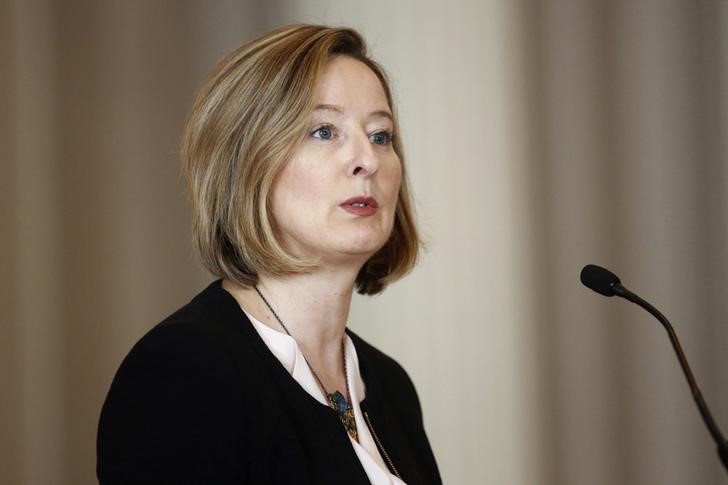
Bank of Canada Senior Deputy Governor Carolyn Wilkins takes part in an event in Ottawa February 10, 2015. REUTERS/Blair Gable
March 22, 2018
By Fergal Smith
TORONTO (Reuters) – Interest rate decisions to achieve the Bank of Canada’s inflation target and support financial stability are currently complementary given high household debt and an economy operating near capacity, a top central bank official said on Thursday.
In a speech largely devoted to the resiliency of the financial system, Senior Deputy Governor Carolyn Wilkins said the bank was taking a cautious approach as it set interest rates, with an eye to both financial imbalances and consumer leverage.
With debt levels high and capacity constraints, the bank’s policy actions – which include three rate hikes since July – to achieve its 2 percent inflation target and promote financial stability are complementary, Wilkins said.
But there is nevertheless a fine balance to be struck, she said, noting that “while moving too slowly would allow more time for financial vulnerabilities to build, moving too quickly could have outsized effects, given the high level of household indebtedness.”
“There may be, in different situations, a case for taking longer to bring inflation back to target than the usual six to eight quarters,” she added.
Wilkins said policymakers needed to focus on refining their understanding of the role of monetary policy in supporting financial stability, keeping regulatory and supervisory policies up to date, and planning for recovery when things go wrong.
The threat of cyber attacks and the rapid pace of financial innovation were two areas of growing concern, Wilkins said.
“The crypto world is moving fast, and is largely unchecked. This certainly raises concerns about investor protection, market integrity and the use of crypto assets in illegal activities,” Wilkins said in notes for a speech to the University of Toronto’s Rotman School of Management.
Noting that low interest rates encourage people to not only borrow more but to make riskier investments to get better returns, Wilkins said price stability alone was not enough to ensure financial stability and could contribute to the buildup of vulnerabilities.
Highlighting two methods to integrate financial stability considerations into monetary policy, Wilkins recommended investment in policy models as well as strengthening macroprudential policies to target financial system risks.
“A solid framework is essential to reduce the likelihood of undue pressure for monetary policy to lean against the build-up of financial vulnerabilities,” she said.
(Additional reporting by Andrea Hopkins and David Ljunggren in Ottawa; Editing by Lisa Shumaker)

